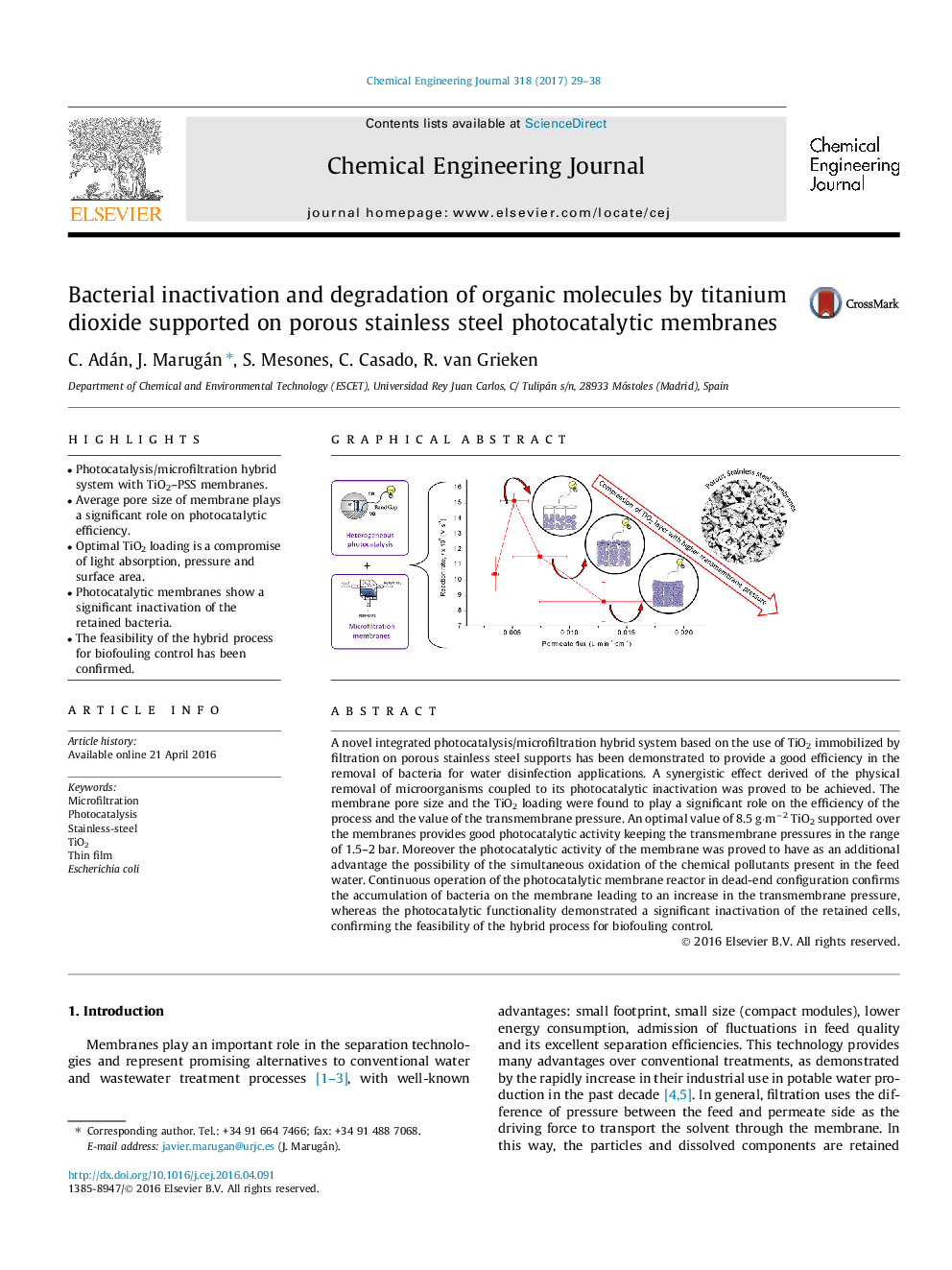| Article ID | Journal | Published Year | Pages | File Type |
|---|---|---|---|---|
| 6466241 | Chemical Engineering Journal | 2017 | 10 Pages |
â¢Photocatalysis/microfiltration hybrid system with TiO2-PSS membranes.â¢Average pore size of membrane plays a significant role on photocatalytic efficiency.â¢Optimal TiO2 loading is a compromise of light absorption, pressure and surface area.â¢Photocatalytic membranes show a significant inactivation of the retained bacteria.â¢The feasibility of the hybrid process for biofouling control has been confirmed.
A novel integrated photocatalysis/microfiltration hybrid system based on the use of TiO2 immobilized by filtration on porous stainless steel supports has been demonstrated to provide a good efficiency in the removal of bacteria for water disinfection applications. A synergistic effect derived of the physical removal of microorganisms coupled to its photocatalytic inactivation was proved to be achieved. The membrane pore size and the TiO2 loading were found to play a significant role on the efficiency of the process and the value of the transmembrane pressure. An optimal value of 8.5 g·mâ2 TiO2 supported over the membranes provides good photocatalytic activity keeping the transmembrane pressures in the range of 1.5-2 bar. Moreover the photocatalytic activity of the membrane was proved to have as an additional advantage the possibility of the simultaneous oxidation of the chemical pollutants present in the feed water. Continuous operation of the photocatalytic membrane reactor in dead-end configuration confirms the accumulation of bacteria on the membrane leading to an increase in the transmembrane pressure, whereas the photocatalytic functionality demonstrated a significant inactivation of the retained cells, confirming the feasibility of the hybrid process for biofouling control.
Graphical abstractDownload high-res image (245KB)Download full-size image
